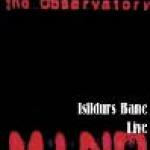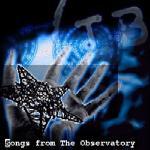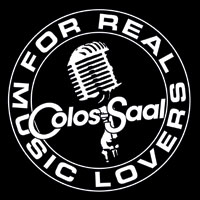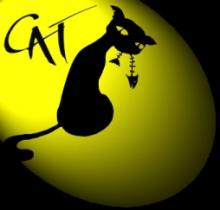Zugegebenermaßen hatte ich von den Tolkien - Fans ISILDURS BANE aus Schweden noch nie vorher gehört. Und ich wette, vielen Anderen geht es ebenso.
Band:
BiografieWhere does the name "Isildurs Bane" stem from? Isildurs Bane
Isildurs Bane is, both in the original English version and in the translated Swedish one, one of the several names of "The Ring" in J.R.R. Tolkien´s trilogy "The Lord of the Rings". When the band was formed in 1976, there was a huge interest in the fantasy style in books, art and music, making it quite natural to choose a name associated with the kind of music we made.
Who were the former members and what were your main influences?
The group started like any other amateur band, although with an ambition somewhat higher than most of the others. The former members came from two disbanded groups, which both played a kind of symphonic rock.
Kjell Severinsson - Drums, Jan Severinsson - Flute & Violin, Mats Nilsson - Guitar & Vocals, Ingvar Johansson - Bass, Bengt Johnsson - Keyboards and Dan Andersson - Guitar & Oboe. Aged between 15 and 19, our main influences lay within the English symphonic rock scene, notably bands like Gentle Giant, Genesis, Yes and ELP.
What kind of music did you play in the early days and did you at that time really know exactly what you wanted to do?
In those days Isildurs Bane played in a far more symphonic style than on the Sagan om Ringen and Sagan om den Irländska Älgen albums. Some of the songs were verging on half an hour long, which felt right at the time.
Now we´re acting on the same principles as we´ve always done - we do what we feel we have to. Nineteen years is a long time. You mature, yearning to develop and experience as much as possible while retaining your integrity. Over the years we´ve gathered a lot of impressions from all around, though mainly from fusion, jazz, classical and theater music.
Our musical development has also to do with new members coming from different backgrounds, such as pure rock, funk, classical and jazz. But despite our curiosity we´ve always retained a personal touch in our music; the harmonies, the melodies, the structure... So yes, we´ve always known what we wanted to do and we´ve always done it!
When did Mats Johansson join the group and what influence did he have on the musical development of Isildurs Bane?
When Mats joined in1977, he replaced one of the guitarists. As a consequence, the band had two keyboard players until ´81, when Bengt Johnsson left the group. In Isildurs Bane, two keyboard players were much more suited to our sound than two guitarists.
Mats has contributed a great deal to the group´s musical development. He´s a font of ideas and has over the years emerged as Isildurs Bane´s main composer. Without him, no one can tell where Isildurs Bane would have been today.
When did you go on your first tour and with what material did you tour?
We had our first real tour in 1982. Before that we had done a lot of concerts, but they were more in singles. We even performed two live radio gigs. We toured with Sagan om Ringen but also with lots of other material, some of which was recorded but never released.
When did you release your first LP?
Sagan om den Irländska Älgen was released in 1984. It´s a story about nuclear war really happening and the reactions of human beings; the resulting apathy, narrow-mindedness, fear and panic.
Why did you create your own label?
We´d worked hard to cut a record deal, but most companies felt that Sweden was too small for our kind of music. The only option we had, it seemed, was to create our own label.
On your second album - Sea Reflections - you abandoned lyrics. As your music had always been based on narrating themes, wasn´t it hard to express something specific without words?
The album Sea Reflections is a tribute to the sea and the people who work for its survival. Expressing that without words is of course a very difficult task. But we dropped the lyrics because it was a natural move in our development.
When we worked on Sagan om Ringen and Sagan om den Irländska Älgen, we had also written a lot of instrumental music, knowing that we wanted to express ourselves through our instruments as opposed to lyrically. We´ve used words on the record covers and booklets to try to touch people´s hearts and minds, but the most effective way to express ourselves has been via live acts.
Lately we´ve cultivated our own stage style, seeking through total expression to seize people´s imagination. To this end we use lights, pre-recorded sound effects, words, scenography, variable attire and more. We also use some lyrics, spoken not sung. It´s our conviction that people, particularly in this day and age, need to tap into their imagination.
On Sea Reflections you embraced a new, more brass oriented sound. Why?
We´ve always wanted to develop our music in different directions, and on Sea Reflections we experimented with a type of symphonic jazz. The saxophonist Bengt Johnsson had played with us since 1982, but it was not until 1985 that he became a permanent member of Isildurs Bane. His sax playing meant a lot to us and made us more aware of wind instruments, inspiring us further to use the brass section in our music.
When did you start touring abroad?
1986 saw our first international tour. We kicked off with a three-week stint in Germany, doing gigs far and wide. Now and again we´d do intimate overcrowded pubs, which entailed skipping the show and focusing fully on the music.
Plenty of rave reviews, then?
The audience truly appreciated our thing. So, yes, it was a wonderful experience that made us proud of what we were doing. We decided to do more international tours.
In 1987 you released a new LP - Eight Moments of Eternity. It seems that musically you pursued the same direction as on Sea Reflections?
Yes, we continued composing instrumental music, though we reverted to a more traditional Isildurs Bane sound - plenty of keyboards instead of the "jazzy" sound heard on Sea Reflections.
What of these eight moments of eternity?
Since our previous records had been more or less bound to one theme on each album, we wanted to make a record with tunes without any special connections between them. Rather like a book of short stories instead of a novel. Of course, this is what records usually are, but it meant something special to us. In terms of themes, we´ve always yearned to express an opinion in a song or at least have something to tell, even though it´s instrumental. We try to use music to make an illustration of something - a mood. In this case there are eight themes, ranging from high flying dreams in books and the imagination, to the frequently harsher cold reality of industrialism.
On Eight Moments of Eternity Fredrik Janacek replaced Stigge Ljunglöf, who had been playing bass with you for two years. What was Janacek´s contribution to the group?
He came from a background of jazz/funk, R&B and theater music. His involvement, not least from an artistic perspective, had a major impact on the group.
In 1988 you released the LP Sagan om Ringen. Why the long wait?
In 1981, when we made Sagan om Ringen, we had no record deal. We had, however, recorded a lot of the material in the studio. So we released a cassette based both on that material and some live recordings. It sold more than 3000 copies.
When we set up Isildur Records HB it felt a little passé to release it on LP, given that the live recordings weren´t good enough to go on record. But Sagan om Ringen has always meant a lot to us - we made ourselves a name through that album. What´s more, there was an increasing demand for it, and we happened to have some time and money left to spend on it. We re-recorded some material where previous recordings didn´t fit, wrote a few new songs and put everything together.
The very same year you toured in Sweden, Germany and Hungary. What were your experiences of Hungary?
Hungary is a long story. Mats Nilsson, who came down with appendicitis, was stuck in a Hungarian hospital. So we had to cancel the tour. But we had our minds set on this, and in the end we managed to pull it off. We had some excellent shows in Budapest. The Hungarians made us feel really welcome. A truly superb audience and we hope to be back there soon.
How did you find Ferdinand Cheval and his Le Palais Idéal, and why was he chosen as a concept for your next album?
We spotted Ferdinand Cheval in a magazine article and found him and his work a perfect subject for an orchestral piece - something Mats Johansson had been planning for a long time. In Cheval and what he did we found quite a close relationship to the subjects and opinions we had always tried to put into our earlier productions - going beyond the conventional, retaining the integrity of one´s own ideas no matter what.
He was an amazing man, wasn´t he?
Indeed! We visited his castle Le Palais Idéal in 1988, and it´s fantastic. It took him 33 years to build it with his own hands. It´s testimony to the monumental will of a man who never gave up despite all the abuse and other difficulties.
Did you tour with Cheval using the same orchestral setting as on the album?
Yes, we actually toured with the orchestral setting before we recorded the album. It was a major experiment. We worked with Hallandsensemblen, a local, professional chamber orchestra expanded with a small brass section.
We also collaborated with Christian Jerhov, a guy who had previously played trombone with us. He helped to translate our ideas into orchestral arrangements. This was also the first tour with our new guitarist Tommy Nilsson. We really put our backs into it.
Besides the music, the show and the tapes, we built the scenography ourselves - a job which took us several months. In the end, the tour was seen by over 17000 people and the whole project was a huge success. It just shows you how you can reach your goals, not least artistically, by crossing frontiers.
How did you record it? Weren´t there any musical conflicts between settings?
As we had toured with Cheval before we recorded it, any differences had been ironed out. Our intention was to weave our different musical settings together in the arrangement, and not just use the orchestra as a complement. This was new to us and nobody knew what it would sound like. Happily, we were helped a great deal by our co-producer, guitarist Jan Schaffer, renowned worldwide.
In the fall of 1989, you toured with Cheval and the new guitarist Bo N Roth, but this time without the chamber orchestra. How did that pan out?
It worked out fine. There was more rock n´roll about it. Bo is a supremely gifted guitarist, whom we´d known for a while. When Tommy quit Bo gave it a go and it turned out very well.
We played in Sweden, the Netherlands, Germany, Czechoslovakia and Hungary. Everything from small clubs to concert halls. It was highly interesting to be in Czechoslovakia at that time. The regime was collapsing and people were demonstrating in the streets. With soldiers and police everywhere, the atmosphere was truly menacing. When the riots began we were caught in the middle.
What happened between 1990-1991? You got a new bass player, Fredrik Emilson, but you didn´t tour or release any new material until 1992.
Well, a lot happened. Fredrik Janacek left Isildurs Bane and was replaced by Fredrik Emilson, a gifted young bassist who also plays keyboard and percussion.
We tackled a rich variety of theater music projects: Dickens´ A Christmas Carol, children´s plays and more. Isildurs Bane has always yearned to break new ground, which is ultimately why we embraced these various forms of artistic expression. In the spring of 1991 we were set to tour Europe, but illness within the group forced us to cancel.
How did you set about your work with the double CD The Voyage - A Trip to Elsewhere? It contains so many different musical styles and influences mixed in such a wonderful way.
We started by doing a piano trio version (violin, cello and piano) of the main theme of the album - The Voyage Part I to IV.
Mats Johansson wrote the music and Jan-Erik Sääf, an old friend of ours, arranged it. Then we arranged it collectively within Isildurs Bane on the basis of the piano trio version, but with a lot of additional developments.
After that we put everything together and went on tour in Sweden. We were joined byThe Zorn Trio, an accomplished Gothenburg based piano trio. Nobody knew what that would sound like. Merging an instrumental rock oriented band with a classical piano trio had never been tried before, as far as we knew.
On the other tunes we proceeded differently. Some were classic Isildurs Bane productions , such as "Nimis" and "Das Junkerhaus". Others were in a more minimalistic vein - the three "Picassiette" pieces, where the grand piano played simple melodies and we filled in with various small-scale instrumental additions. We used a choir on the four "La Sagrada Familia" songs to illustrate the day, evening, night and morning in the cathedral of the same name. Then we enhanced it by applying flute, guitar and percussion.
This is an album where much of the inspiration has been gleaned from a wide array of unconventional sources, notably from such artists as Adolf Wölfli, Raymond Isidore, Karl Junker, Antoni Gaudi and Lars Vilks. How has it been possible to blend them into your production?
It´s hard to explain because they´re connected in so many ways, but the entire concept amounts to a voyage on several levels. It starts off as a journey inside Adolf Wölfli´s fantasy world, followed by a journey between these other practitioners of unconventional art. Finally, it´s a musical odyssey touching on all the styles. Basically, it´s a trip to elsewhere.
You rearranged "The Voyage" Part I - IV prior to your autumn 1992 tour of Czechoslovakia. Why, and which setting did you use this time round?
As we said, we´ve always striven to develop our music in different directions. This time we wished to develop the same piece of music. In this version we decided to add more percussion, while retaining the modern/classical tension.
We worked with a great percussionist, Klas Assarsson, who used everything from mallets to tympani. Moreover, we retained the album structure, as well as Joachim Gustavsson, the Zorn Trio violinist. This made for an extremely powerful setting - drums, percussion, bass, keyboards, guitar and violin. What´s more, we loved it!
In 1992 some of your old albums were released on CD. Are all your records currently available on CD?
Yes. We released both Sagan om den Irländska Älgen and Sagan om Ringen on one CD. Similarly, Sea Reflections and Eight Moments of Eternity were released on the same CD.
How can you make such sophisticated, anti-commercial music and still have the chance to make new albums?
Making non-commercial music is hell. Fortunately, in Sweden the state supports this type of work. Since Sweden is such a small country, there is no way to satisfy all musical tastes by working without this support. So, without state subsidies, new non-mainstream music such as jazz, fusion, folk music, progressive rock, avantgarde and experimental music would be a rare occurrence indeed on the Swedish music scene.
In 1993 you started to do live concerts together with Jan Schaffer and Björn J:son Lindh. How did that turn out?
Well, Jan Schaffer and Björn J:son Lindh had been contributing musically on both Cheval and The Voyage, so it was natural to ask if they would like to play with us live.
The first concert was at Götaplatsen in Gothenburg - an outdoor concert in the evening with an 8000 strong crowd. It was a good experience because we´d never previously performed under such circumstances.
We played material from Cheval, The Voyage and from Jan´s and Björn´s collections. At first the audience appeared slightly bemused. People sporting white coats and headlamps, dancers, painters and cyclists accompanied by a cacophony of music. But everything worked out brilliantly. So we decided to do something more with this constellation. In the spring of 1994 we did a Swedish tour, employing the same concept.
At that time you got a new guitar player, Jonas Christophs?
Yes, Jonas is a very gifted and personal guitarist whom we´d known for some time, and when we needed a new guitar player he was the obvious choice.
Early1995 you went to Umeå in the north of Sweden to work with the Umeå Symphony Orchestra. How did this collaboration come about? And how did it turn out?
Our violinist Joachim Gustavsson was working as leader of the orchestra. He came up with the idea and the management and orchestra were positive. So we rearranged The Voyage once more together with Jan-Erik Sääf.
This is probably the last version of The Voyage and quite possibly the best. It was a large-scale project with a lot of scenography, b/w film and other props. The orchestra and the band were situated in the middle of a big installation with sophisticated lighting. The result was a kick for all, and we may well develop the ideas further still.
Isildurs Bane have chosen to release their albums on labels owned by the group. Why?
Mainly for one reason: We compromise within, not outside the group. We make all the decisions and invest any funds in new productions. Initially, Svenska Unikum was meant to record and distribute music touching on Isildurs Bane´s musical spheres. Unfortunately, we haven´t seen that money yet, although the problem may well be resolved in the not too distant future.
What´s been your perception of Isildurs Bane and its contemporaries over the years?
From the very start there has been an essential, basically unaltered, structure within Isildurs Bane. It´s centred around a somehow natural level of quality and progression, two themes that have always formed the basis for every composition by the band at a any given point.
In 1976, when the punk movement turned the so- called progressive movement on its head, the winners were the major record labels. The cul-de-sac which the big 70s groups found themselves in had been created by the pomposity of the groups themselves. Previously, there had been an interest in quality - like in poetry or art - but all of a sudden music could no longer develop and flourish.
The older members of Isildurs Bane were brought up musically at a time when ELP, Yes and Genesis were appearing in the charts. New members come and go and in some ways things change to a degree, but the fundamental ideas remain unchanged. Nobody has seriously challenged the basic ideas by suggesting, for instance, that Isildurs Bane should play a more accessible form of music. Isildurs Bane have always been able to perform different projects where musicians could realise ideas that could not be heard in another context. At least not locally.
Mats Johansson´s role as the group´s composer is somewhat paradoxical. He has to be historically consistent, but at the same time develop and progress. This situation is a constant source of stimulating discussion within the group.
As to influences from the 70s bands we grew up with: We think we carry them with us even though no-one in the group really listens to those bands anymore, King Crimson being one rare exception. The younger members have never listened enough to progressive rock to be influenced by it in the first place.
There seem to be several problems regarding the newer progressive bands; many are more concerned with belonging to a genre than challenging the expectations of the audience, the record labels and the distributors. This would never happen if the music is truly progressive.
It is very frustrating to know that if we decide to use a trombone section for example, sales drop immediately. We prefer to make a distinction between progressive and symphonic rock. The former represents creative music making, the latter is useful for finding a label the record business can put on the music in order to sell it to a specific audience. Isildurs Bane is an electronic chamber orchestra.
Quelle: http://www.isildursbane.se/Discografiesiehe Homepage www






